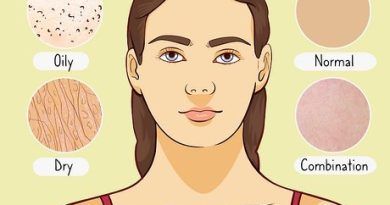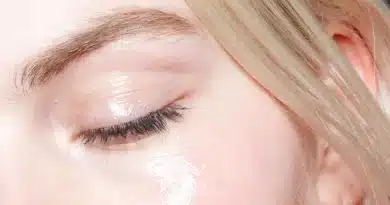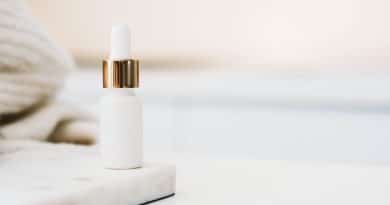The Skin Care Routine
What is the first thing we notice about someone else’s appearance? Their face of course. The age of proper face skincare being only for women has since passed. Men are now appreciating the value of “good” skin with every day that we get older. Whether you have acne, wrinkles, freckles, or anything else you consider imperfections, skincare routines are never too late to implement.
Seeing the huge amounts of products on the shelves that claim to do one thing and another product claiming to do another can be very intimidating, moreover misleading. This article sets out to give you the basics that will be everything you need to start your way to get a nice clean and clear face. Our skin is the largest organ in our body so let’s look after it.
The basic skincare routine
Step 1: Cleansing
What does it do?
Remove excess oil on the surface and skin pores
Aids the cell renewal process
Removes dirt and grime
Removes Bacteria
How to use it?
Wash your hands
Splash warm water onto your face. It is best to use warm water as it helps to open the pores getting any kind of face wash later applied to seep deep into your skin. Hot water can burst capillaries and you’ll have ugly red swivels in the skin which is not wanted.
Squeeze a small amount of cleanser into your hands (or a washcloth/gauze pad) and lather. Then gently rub it onto your face avoiding being too hard-handed.
Cleanse from the neck upwards to your hairline rubbing in a circular motion, making sure to get every spot.
Rinse the skin with cool water. Repeat multiple times if needed until you remove all cleansers.
Step 2: Exfoliate
What does it do?
Removes dead skins cells
It will help the effectiveness of moisturizer that is later applied
Removes dull surface layers and reveals new, healthy layers.
Reveals new healthy layers of skin
Skin looks and feels healthier. Smother and Softer
How to use it?
Splash warm water onto your face
Gently rub it onto your face avoiding being too hard-handed
Massage it, using a circular motion for a few minutes.
Rinse the skin to remove it
An Exfoliator should need to be used every day. The face is very sensitive and should only be exfoliated according to many research papers of 1-3 times a week. If you feel any irritation from using it too often, then do not use it as much. Find the best option for you, as our skin reacts in different ways from one person to another.
Step 3: Moisturize
What does it do?
Preservation of normal Skin
Prevent skin from becoming too dry or oily
Replenishes moisture and nutrients
Lubricates and softens the skin
Can give a nice healthy glow
How to use it?
Apply Moisturizer to damp skin after cleansing
Don’t apply around the eyes. Some say it does not matter but the skin around the eyes is different from the rest of your face. The skin is much more sensitive and could react negatively to Moisturizers that are too rich. This could depend on the type of skin you have and the type of product you are using.
Suggested to use it for your neck as well as your face.
Which moisturizer is best for you?
On the most basic level, moisturizers hold water in the outermost layer of skin. They also act as a temporary barrier. Many moisturizers contain some combination of humectants and emollients, as well as other ingredients.
The moisturizer that’s best for you depends on many factors, including your skin type, your age, and whether you have specific conditions, such as acne. For general guidelines, consider the following:
Dry skin. To restore moisture to dry skin, choose a heavier, oil-based moisturizer that contains ingredients such as antioxidants, grape seed oil, or dimethicone, which helps keep your skin hydrated. For very dry, cracked skin, petrolatum-based products are preferable. They have more staying power than creams do and are more effective at preventing water from evaporating from your skin.
Oily skin. This type of skin is prone to acne and breakouts. Though oily, such skin still needs moisture, especially after using skin care products that remove oils and dry out the skin. A light moisturizer can also help protect your skin after washing. Choose a water-based product that’s labeled “noncomedogenic, ” which means it won’t clog pores.
Sensitive skin. Sensitive skin is susceptible to skin irritations, redness, itching, or rashes. Look for a moisturizer that contains soothing ingredients such as chamomile or aloe and doesn’t contain potential allergens, such as fragrances or dyes. Also, avoid products containing acids, which can irritate sensitive skin.
Mature skin. As you age, your skin tends to become drier because your oil-producing glands become less active. To keep your skin soft and well hydrated, choose an oil-based moisturizer that contains petrolatum as the base, along with antioxidants or alpha hydroxy acids to combat wrinkles. These ingredients help hold in moisture and prevent flaky, scaly skin.
Normal skin. Normal skin is neither too dry nor too oily. To maintain this natural moisture balance, use a water-based moisturizer that has a light, nongreasy feel. These moisturizers often contain lightweight oils, such as cetyl alcohol, or silicone-derived ingredients, such as Cyclomethicone.




